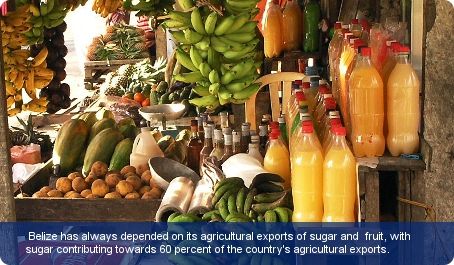Find a business in Belize

Belize is a small developing country located on the Caribbean coast of central America. An export-processing zone has been developed near Belize City International Airport in an effort to diversify the economy from its focus on agriculture. Belize has a GDP per capita of US$4,720 (2010) and saw GDP growth of 3.1% per annum 2008-12.
The Belize economy is still primarily focused on agriculture, but tourism is the main source of income. The country benefits from certain advantages, such as its small size which ensures an accessible market, an embedded history of using the English language and law system, and well-developed media for a nation of its size.
Along with forestry and fishing, agriculture makes up 12% of GDP (2010). Historically Belize has always depended on its agricultural exports of sugar and fruit juice concentrates to power its economy. Unfortunately, these critical export commodities compete in highly volatile global commodity markets. On top of this, the country’s entire agricultural sector is vulnerable to massive storm damage caused by hurricanes virtually every year.
Almost three-quarters of the country is covered in forest. Therefore the main agricultural products produced by the country include bananas, cacao, citrus, sugar, fish, cultured shrimp, lumber and garments.
Industry contributes 21% of GDP and mainly focuses on seawater fish, due to Belize’s continental long coast of 457 km (2010). Fish stocks include spiny lobster, whiteleg shrimp, yellowfin tuna and mackerel.
Oil was first discovered in the mainland state in 2005 and Belize has around 6.7 million barrels of proven oil reserves (2011). The country’s main export partners are the USA, UK and other European countries. Belize’s main import partners are the USA and Mexico.
Tourism has developed rapidly in the last ten years with particular emphasis on eco-tourism in order to exploit Belize’s wonderful tropical fauna and flora. It directly contributes 12% to the economy and generates 14,500 jobs – 10.9% of total employment (World Travel and Tourism Council, 2012). Timber, tropical fruits, seafood, marine products and clothing produced in the country’s export processing zone near the Belize City International Airport are becoming significant foreign exchange earners for the country.
During the 2000s the Belize economy suffered due to frequent hurricanes impacting agricultural output and tourism. These natural disasters have been frequent events over the last ten years and the global downturn of 2008-09 further slowed the economy.
Due to its long flat coast with lagoons and mangrove swamps, Belize has over 800 km of navigable inland waterways, though these can only be accessed with small vessels. Its road network covers most of the country, but only 17% is paved.



